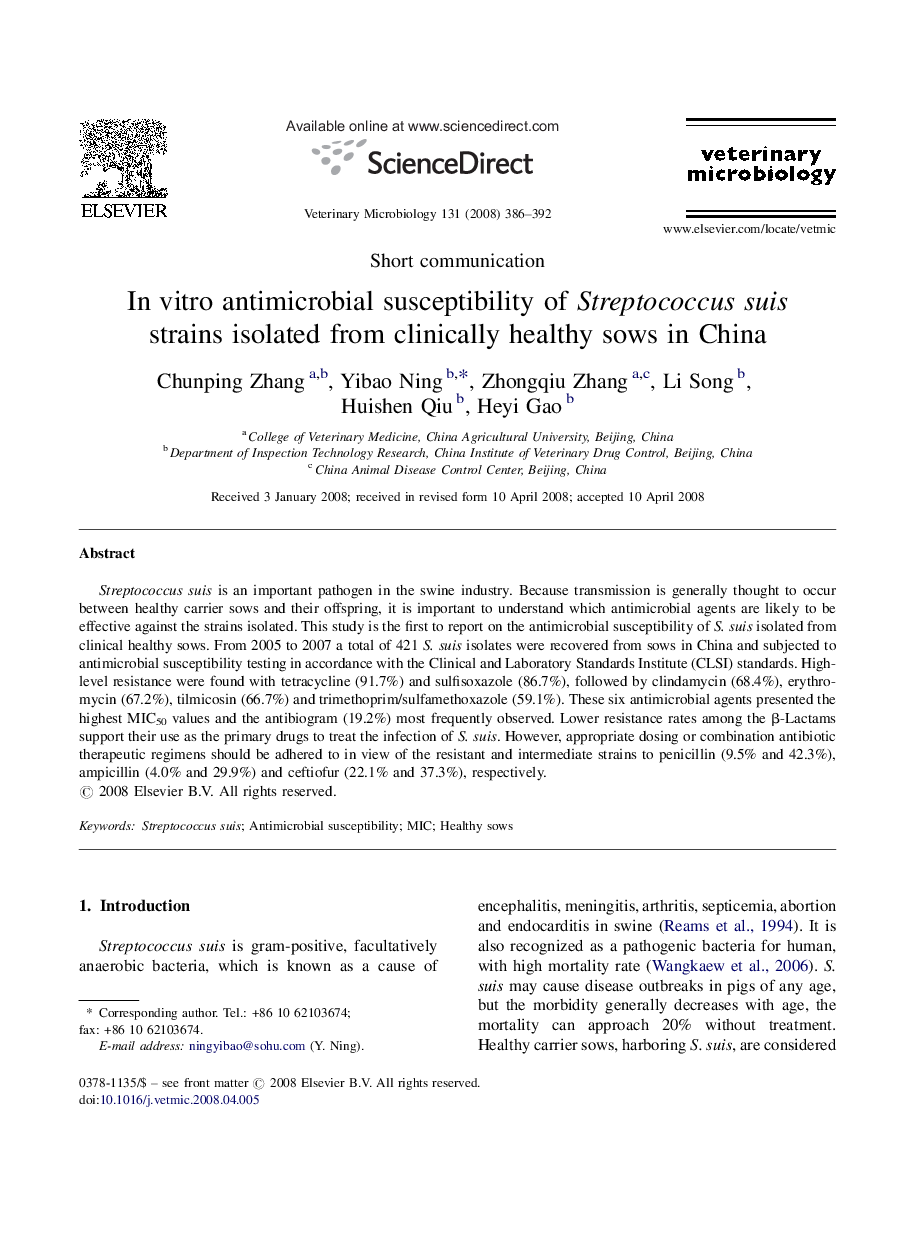| Article ID | Journal | Published Year | Pages | File Type |
|---|---|---|---|---|
| 2468618 | Veterinary Microbiology | 2008 | 7 Pages |
Streptococcus suis is an important pathogen in the swine industry. Because transmission is generally thought to occur between healthy carrier sows and their offspring, it is important to understand which antimicrobial agents are likely to be effective against the strains isolated. This study is the first to report on the antimicrobial susceptibility of S. suis isolated from clinical healthy sows. From 2005 to 2007 a total of 421 S. suis isolates were recovered from sows in China and subjected to antimicrobial susceptibility testing in accordance with the Clinical and Laboratory Standards Institute (CLSI) standards. High-level resistance were found with tetracycline (91.7%) and sulfisoxazole (86.7%), followed by clindamycin (68.4%), erythromycin (67.2%), tilmicosin (66.7%) and trimethoprim/sulfamethoxazole (59.1%). These six antimicrobial agents presented the highest MIC50 values and the antibiogram (19.2%) most frequently observed. Lower resistance rates among the β-Lactams support their use as the primary drugs to treat the infection of S. suis. However, appropriate dosing or combination antibiotic therapeutic regimens should be adhered to in view of the resistant and intermediate strains to penicillin (9.5% and 42.3%), ampicillin (4.0% and 29.9%) and ceftiofur (22.1% and 37.3%), respectively.
